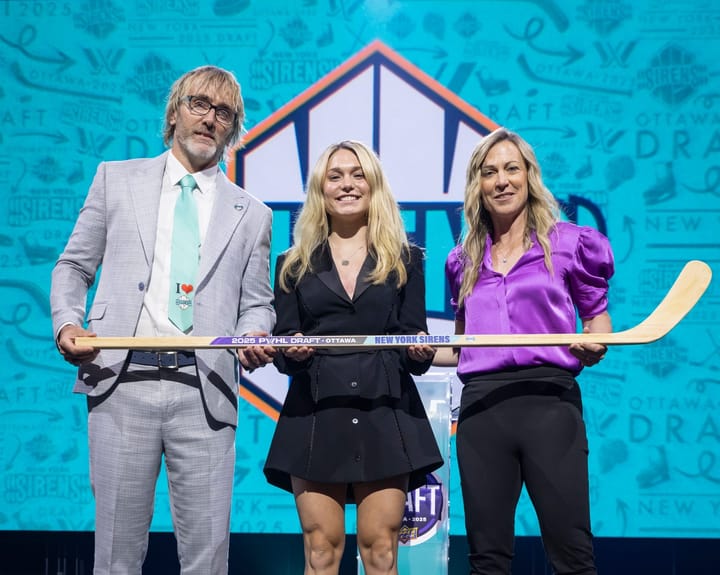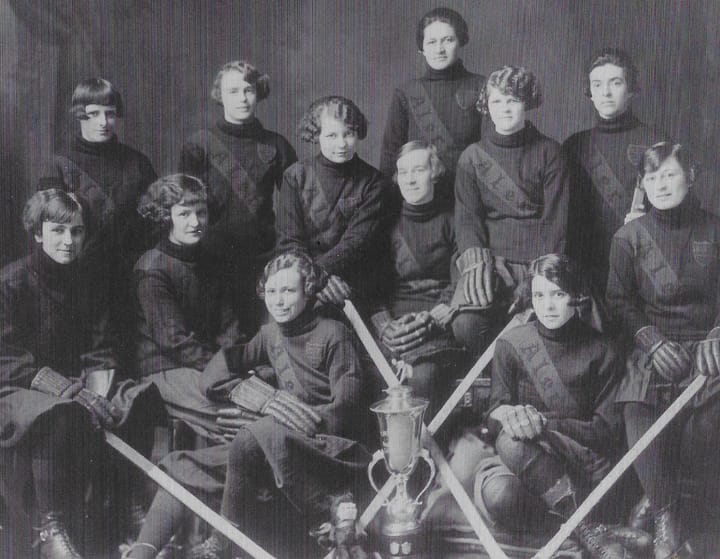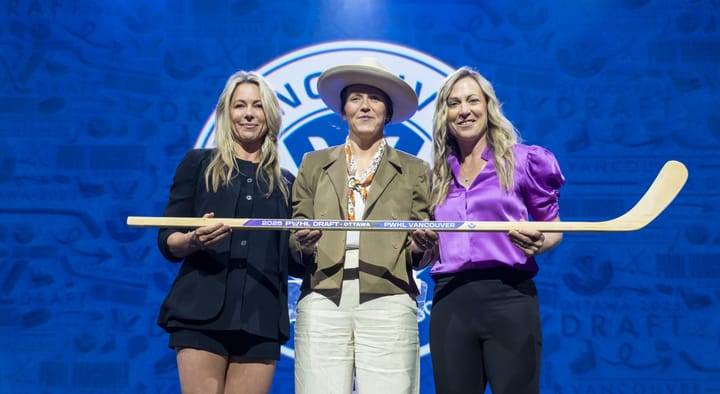The Ice Garden’s NCAA Fantasy Hockey Strategy Guide
Note: this guide is not guaranteed to be useful
In the last post, we gave you an introduction to the Ice Garden’s NCAA Fantasy Hockey League for the 2018-2019 season. In this post, we’re going to try to give you some tips for building your team.
Related
Announcing The Ice Garden’s NCAA Fantasy Hockey League
The first thing to note is that this is a cost-to-sign league, where any given player can be signed by multiple teams and each player has a cost based on how she did last season (or, if she wasn’t in the NCAA last season, a guess as to how she would have done). So, as your team’s manager, you’re trying to get the most bang for your buck and sign not just the players who you believe will have a great 2018-19 season, but the ones who you believe will have an even better season this year than last year.
Skaters
So what does that mean? I took the 2015-16 season as a sample (because it didn’t have Olympic years on either side to distort the stats with centralization) and looked at the top performers in that year. Then I looked at how they performed in 2016-2017. Between those two seasons:
- The miracle class of Carpenter / Skarupa / Trivigno graduated from BC and everyone’s production at BC dropped off significantly (except for Andie Anastos).
- Kendall Coyne graduated from Northeastern and most Northeastern players dropped off significantly.
- Marie-Philip Poulin graduated from BU and most BU players dropped off significantly.
- Merrimack moved from an all-freshman team to a team that was a mix of sophomores and freshmen, and its top performers increased their production by 50 percent or more.
- St. Lawrence was significantly better as a team, and so were all the significant contributors on the team./
The lesson I draw from this is: draft the team first, the player second. A good team lifts all boats. If a team takes a step back, almost all its players also take a step back.
Based on that, the teams I would recommend drafting players from are:
- BC: Three returning Olympians and a weak team (Holy Cross) is entering Hockey East.
- Clarkson: their nearest rival, Colgate, is graduating a lot of talent, and Clarkson is bringing in Kassidy Sauve and TT Cianfarano — you wouldn’t think they had a lot of room for upside, but they’re built to dominate this year
- Minnesota: Three returning national team players and more U18s than anyone else.
- Wisconsin: One returning Olympian, one almost-Olympian, a brace of U18s, and Sophie Shirley./
2018 Rookie of the Year - Sophie Shirley! (@InfernoCWHL) #WeAreTheGame #ClarksonCup2018 pic.twitter.com/3JIZ9dqAZ7
— CWHL (@TheCWHL) March 24, 2018
All the good Hockey East teams will probably improve their scores as a result of having Holy Cross to knock around, so consider players from UConn and Providence as well — big scorers Maureen Murphy (Providence) and Natalie Snodgrass (Connecticut) may be the players who take best advantage, though other players on those teams may be a better value. Northeastern looked set to improve anyway, and Kassidy Anderson and Codie Cross look well placed to lead that charge.
Minnesota-Duluth have Maddie Rooney coming back and a great incoming class, but may be steamrolled by four games with each of Minnesota and Wisconsin — approach with care.
Colgate are graduating a ton of talent and so the remaining talent will probably drop off; I would avoid them. BU, in this context, also stands for Big Uncertainty — I would be very cautious about drafting from them until we see how they stand up to the loss of superstars Victoria Bach and Rebecca Leslie. Qunnipiac are an interesting case, they had some transfers out over the summer, perhaps the lingering effects of off-ice issues a few years ago, but have four (!) U18s on the freshman class. I would expect them to take a big step forward next year rather than this year, though.
Goalies
Goalies are where there’s a lot of upside potential, and a lot of risk. With goalies you’re playing a game of guess the starter — and, to be specific, you’re playing a game of guess who wasn’t a starter last year (so she’s cheap) but will be starting this year. A starting goalie who isn’t a complete disaster is always going to score you more than a backup who has some brilliant games.
I recommend looking at the National Statistics Database from last season to find a school where (a) the starter starts 80 percent of the games, (b) the backup had good stats in the games she played, and (c) the starter was a senior.
That makes Morgan Fisher from UConn, a team with a tradition of hella strong goaltending, look pretty tempting. She only played nine games last season, but that included a 3-3 tie against hard-shooting BC. The same approach suggests Daniela Paniccia from Penn State, who has a 1-1 tie against Mercyhurst and respectable 2-0 losses to Clarkson on her record. Sydney Scobee, although not a senior, has transferred from Vermont to Minnesota, making Vermont backup Melissa Black worth consideration. Scobee herself is likely to have more shutouts (and more games overall) this year and might be worth a flutter as your third goalie, although she was so good last year that she’s not exactly a bargain.
Robert Morris are graduating a dominant starter, but her backup doesn’t have great stats. With Clarkson graduating Shea Tiley, the new Clarkson goalie would usually be a good bet as Clarkson tends to ride its starters… but in this case the new Clarkson goalie is OSU transfer and NCAA tournament hero Kassidy Sauve, who is elite but literally the most expensive goalie in the league; probably best to look elsewhere for upside.
A safer bet is maybe Aerin Frankel of Northeastern. She started last year as backup to Brittany Bugalski, then was the starter in Northeastern’s improbable (no offense, Northeastern fans) victory over Wisconsin at Thanksgiving, and gradually played herself into a starting role which there’s no reason to think she’ll give up this year. She started only just over 50 percent of the games last year so her cost is relatively low at 27.25 points, but she has less upside than someone who was a true backup last year.
Boston College is usually a good goalie pick because Coach Crowley has a history of strongly favoring having a single starting goalie (to the extent that Katie Burt played every single minute of her senior year even though backup Gabri Switaj was also in her senior year). However, this year BC has two extremely strong freshmen: Maddy MacArthur, starter for the Canadian U18 national team, and Kelly Pickreign, who had an astonishing .965 save percentage in her senior year at Massachusetts private school powerhouse Nobles. MacArthur seems likely to get the nod at the start of the year, but could this be the year the one-goalie-all-the-time paradigm breaks down at BC?
Be Very Aware
The Ivies (Brown, Cornell, Dartmouth, Harvard, Princeton, Yale) start play later than anyone else -- Harvard’s first game is October 19th, Yale’s is October 26th. If there’s an Ivy player you have your eye on, maybe rent someone else for the first few weeks of the season to get the extra points and trade for that Ivy player later on.
In the weekly posts, I’ll note for each school how many games they have coming up that season. There’s a good composite schedule available at USCHO.com, so you can plan ahead.
Hopefully this Strategy Guide helps! Good luck drafting! Remember, send your teams to tigFantasyHockey@gmail.com by SEPTEMBER 28th. Looking forward to a fun season!





Comments ()